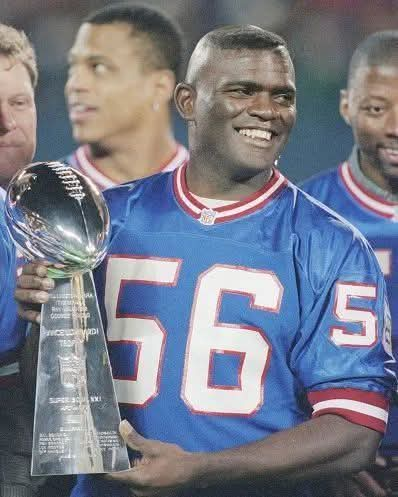On May 1, 1981, a momentous event took place in the history of professional football when the New York Giants selected Lawrence Taylor with the second overall pick in the NFL Draft. This decision would go on to shape not only the Giants’ franchise but the entire landscape of the NFL. Taylor, a dynamic linebacker out of the University of North Carolina, would eventually become regarded by many as one of the greatest football players to ever play the game. His selection on that day marked the beginning of a legendary career that forever changed the role of linebackers in the NFL.
Lawrence Taylor’s journey to the NFL was a story of remarkable talent and versatility. Coming out of high school in Williamsburg, Virginia, Taylor was already recognized for his athleticism and playmaking ability. At the University of North Carolina, he quickly established himself as a defensive force to be reckoned with. Playing linebacker, Taylor demonstrated his uncanny ability to rush the passer and disrupt the opposing offense. His combination of speed, strength, and instincts allowed him to excel in a variety of defensive roles. However, it wasn’t just his physical skills that made Taylor stand out—it was his relentless attitude and unmatched work ethic that set him apart from other players.
When the Giants picked Taylor in the 1981 NFL Draft, they were acquiring more than just a talented linebacker; they were acquiring a player who would change the course of the team’s future. The Giants, under head coach Bill Parcells, had been in need of a game-changing defensive player, and Taylor fit the bill perfectly. The young linebacker arrived in New York with the expectation that he would immediately bolster a defense that had been lacking in star power.
Taylor wasted no time in living up to the hype. In his rookie season, he made an immediate impact on the field, earning NFL Defensive Rookie of the Year honors. His 9.5 sacks and his ability to disrupt offensive schemes became a hallmark of his game. More importantly, Taylor’s aggressive, no-holds-barred style of play began to redefine the linebacker position. He was faster, stronger, and more disruptive than almost any other player in the league. His ability to rush the quarterback and cover ground quickly made him a nightmare for opposing offenses.
What made Taylor even more special was his impact on the Giants’ defense as a whole. His presence on the field allowed the team to run more complex defensive schemes, and his ability to rush the quarterback with speed and power forced offensive lines to constantly account for his whereabouts. Over time, Taylor’s reputation as one of the most dominant defenders in NFL history continued to grow. By his second season, he had already been selected to the Pro Bowl and earned First-Team All-Pro honors, an accolade he would go on to achieve a total of 10 times during his career.
Taylor’s contributions were integral to the success of the New York Giants during the 1980s and early 1990s. He was a key player in the team’s Super Bowl XXI victory in 1987, where his fierce defense helped stymie the Denver Broncos’ offense. His leadership on the field, along with his ability to perform in the biggest moments, cemented his status as one of the greatest players in NFL history.
Throughout his 13-year career with the Giants, Lawrence Taylor amassed 132.5 sacks and was a constant threat to quarterbacks and offenses. He became a symbol of the hard-hitting, no-nonsense style of play that characterized the best defensive players of his era. His impact on the NFL went beyond just his statistical accomplishments—he changed the way the linebacker position was played and how defenses approached the game.
By the time he retired in 1993, Lawrence Taylor had left an indelible mark on the NFL. He was named to the Pro Football Hall of Fame in 1999, and his legacy as one of the best football players ever remains untouched. The New York Giants’ decision to draft him in 1981 is still remembered as one of the most transformative moments in the history of the NFL, and it solidified Taylor’s place among the all-time greats in the sport’s history.
